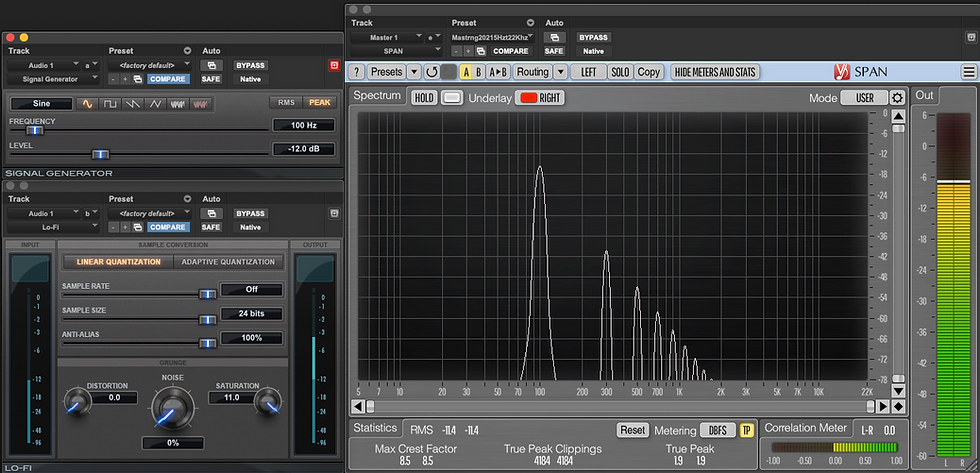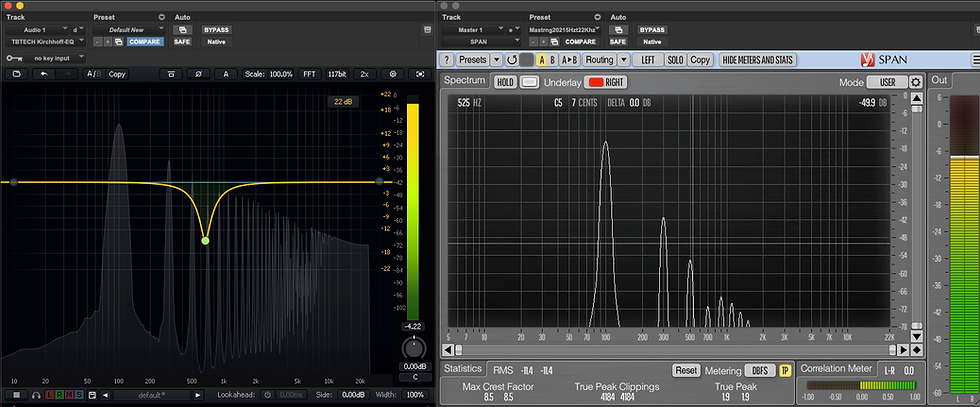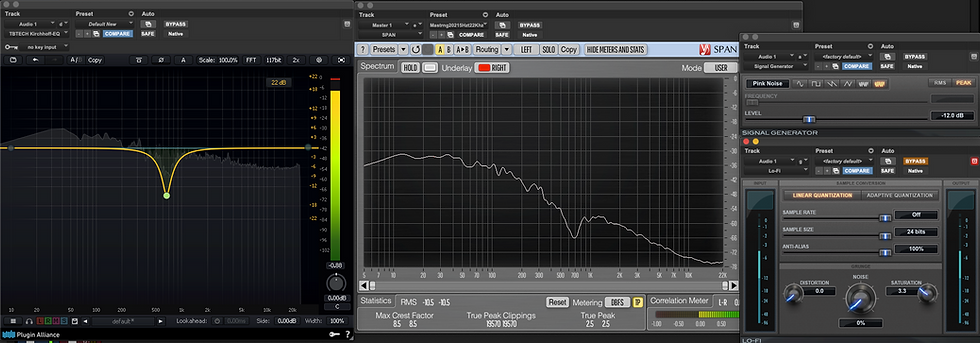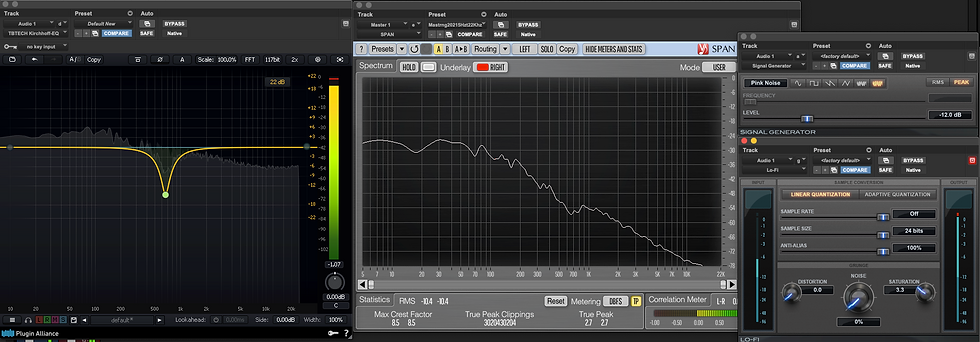Using Distortion Post EQ to retain harmonic structuring on audio signals with harmonic content.
- Primal Mastering Audio
- Jul 26, 2024
- 4 min read
This is a short article to try explain something that has been on my mind for awhile.
It is an issue I have encountered mostly while mixing. I have tend to not get results that have been pleasant to my ears when EQing distorted signals with cuts.
With one of the exceptions being: unless it is followed by more distortion. I stumbled across this while trying to create natural sounding EQ cuts on distorted signals, Mainly in regard to electric guitar/s. I’ve always found EQ changes that have been made before distortion stage to be much more pleasing to me than EQ Changes made post distortion. EQ changes post distortion have always sounded somewhat jarring and unnatural to me.
This issue can sometimes be avoided, by making sure EQ is done before distortion. But this is not always possible. In trying to find ways to try and combat this issue, (when it can not be worked around) I settled upon the conclusion that what sounds unnatural to me about EQing post distortion was the change in the harmonic structure of the signal.
To help explain
Below is an example of thisHere is a 100Hz ToneThat has been distorted (In this case saturated) by Lo-Fi (stock protools) to create a nice third order harmonic distortion that slowly decreases in level as it goes up the harmonic scale.
Fig 1.0 100Hz Distorted to show uniform 3rd order harmonics.

Let’s Say for whatever reason, this source material required a cut at around 700Hz
Here is what happens to that signal if we applied an EQ cut I have done a quite drastic cut here to help better show the effect of this.
Fig 2.0 EQ Cut applied at 700Hz, Showing the now non uniform harmonics

What we can see here is that the third 3rd order harmonic of 100Hz at 700Hz is now reduced.
To me this is where the issue comes in and why this sounds (for a lack of better words) unnatural to me. Even thought this might be a cut that is required for the tone shaping of the source material, we can see that this has changed the harmonic structure of the 100Hz Note and therefore the harmonic structure any of the root notes lower than the frequency of the EQ Cut.
So - Is there a way to be able to make cuts post distortion to change the tonality of a signal but have less effect of the overall harmonic structure of the signal?
To me there is a way around this potential issue: More distortion.
Adding more distortion after the EQ will help redo the harmonic structure to something closer to the original.
Here is an example of redoing Harmonic ordering of a signal post EQ Cut.
Fig 3.0 Another distortion applied to the signal makes the harmonic structure uniform again

Looking at this you might think that this has undone the EQ change that had been made
Yes the cut appears to be reduced, but this is not because of an increase in energy of the original 700Hz of the source that was originally cut.
This is because of an increase in the harmonics from the frequencies below the cut point.
This is an important distinction.
Lets look at this again with more complex audio signals we are much more commonly dealing with, Like electric guitars.I will demonstrate this using some pink noise.
lHere is pink noise run through the same distortion and with the same EQ cut applied. You can see the cut at 700Hz on Span.
Fig4.0 the 700Hz cut applied to the distorted pink noise

Here is the same signal but with some saturation applied post EQ
Fig5.0 The 700Hz cut applied to distorted pink noise with the signal being re distorted after the cut, Showing a slight increase in level at the cut point.

Yes the cut appears to be reduced, but this is not because of an increase in energy at 700Hz of the source that was originally cut. It is because of an increase in the harmonics from the frequencies below the cut point. This is an important distinction. Though this method we can make cuts in problem areas, While being able to better maintain the harmonic structure of frequencies lower than where the EQ has cut.
Possible Uses of this
Example A guitar with a Nasty resonant frequency from a guitar cab.
Lets say you have a recorded guitar that is not sitting well in the mix, because of a guitar cab resonance at 200Hz. You could cut this frequency. However as well as cutting the unwanted cab resonance, this will cause 2 other side effects
1. The guitars may start to sound thin
2. It will change the harmonic structure of the frequencies beneath 200Hz
Adding distortion after this EQ cut will help resolve these issues by
1. Filling out the 200hz region that had been cut with harmonics from the lower frequencies.
2. Rebuilding the harmonic structure of the lower notes
This also helps to explain the distinction above about the post EQ distortion adding frequencies back into the area that was cut, but not undoing the effect of the cut.
In this instance, you will be adding energy back into the 200Hz area with the post EQ distortion. But the energy being added back into that area will not be energy from the room resonance that was cut. It will be energy from the harmonics generated by the distortion on the lower frequencies.
A note on using this technique As with any distortion, We need to be aware of the other effects that come with this and the potential affects they have have on our source signal outside of our one intended use. Consider how linear or non linear the harmonic process you are using is. It is a distortion that is always applying similar harmonics regardless of program level? Or is it a saturation that is applying different levels of harmonics based on the input of the program level? Distortions may be more used on signals where you want the harmonic affect all of the time Where as saturations for when you want the harmonics only when the program level goes above certain levels Ie, using this trick on a snare, but not wanting to distort the bleed into the mic, but only saturate the snare peaks.
And as usual with distortion, be aware of the potential reduction in dynamics
Thanks Luke Finlay Posted 26/06/24 Amendments List


Comments